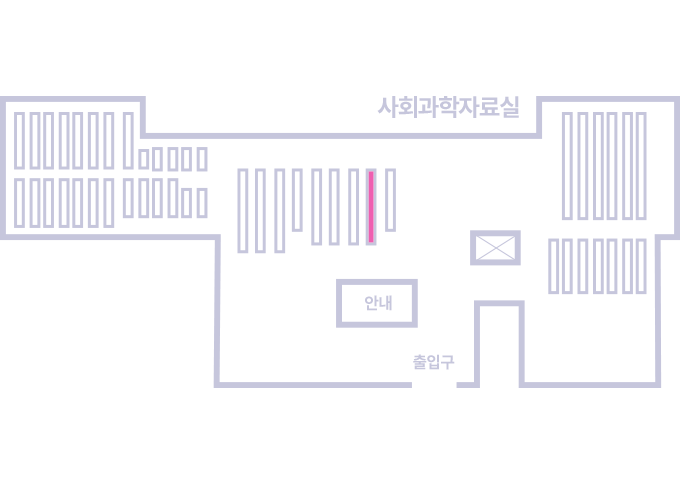권호기사보기
| 기사명 | 저자명 | 페이지 | 원문 | 기사목차 |
|---|
| 대표형(전거형, Authority) | 생물정보 | 이형(異形, Variant) | 소속 | 직위 | 직업 | 활동분야 | 주기 | 서지 | |
|---|---|---|---|---|---|---|---|---|---|
| 연구/단체명을 입력해주세요. | |||||||||
|
|
|
|
|
|
* 주제를 선택하시면 검색 상세로 이동합니다.
Title Page
Contents
Abstract 13
Chapter 1. Introduction 15
1. The need for and purpose of this study 15
1) The need for this study 15
2) Purpose of the study 18
2. Method and composition of the study 21
1) Method of the Study 21
2) Structure of the Study 22
Chapter 2. Background and Literature Review 24
1. Scholarly communication 24
1) Scholarly communication 24
2) The process of scholarly communication 27
2. Digital scholarship and open science 31
1) Digital scholarship 31
2) Open science (Humanities) 32
3) KCI system 34
3. Knowledge structure 36
1) Concept of knowledge structure 36
2) Paradigm shifts 37
4. Literature review 39
1) Bibliometrics 39
2) Digital humanities 40
Chapter 3. Methodology 43
1. Research model 43
2. Data 46
1) Data crawling 46
2) Data preprocess 50
3) Data columns 54
3. Data analysis method 55
1) Exploratory data analysis (EDA) 55
2) Structural topic model 56
3) Co-citation analysis 59
Chapter 4. Results 62
1. Study1: EDA 62
1) Introduction 62
2) Results 63
3) Conclusions 83
2. Study2: Structural topic model 85
1) Introduction 85
2) Results 88
3) Conclusions 94
3. Study3: Co-citation analysis 94
1) Introduction 94
2) Results 96
3) Conclusions 102
Chapter 5. Conclusions 103
1. Summary 103
2. Discussion 105
3. Limitation 109
References 111
Appendices 122
〈Appendix 1〉 Stopword list 122
〈Appendix 2〉 STM Keywords 123
〈Appendix 3〉 STM Regression Results 127
논문요약 137
Figure 1. The research processes. 21
Figure 2. The Four Functions of Scientific Communication. 27
Figure 3. The Garvey-Griffith Model. 28
Figure 4. Humanities Research Process Identified through In-depth Interview. 30
Figure 5. Scientific Communication : A Model for 2020. 31
Figure 6. Turning point of research topic. 38
Figure 7. The results of paper search in KCI. 48
Figure 8. The paper detail page. 49
Figure 9. The researcher search page in KRI. 50
Figure 10. Data processing utilities in CiteSpace. 53
Figure 11. Web of Science bibliographic file format. 53
Figure 12. Training process of topic models. 57
Figure 13. Plate diagram comparison of LDA and STM. 58
Figure 14. Type of citation network 60
Figure 15. Clusters of COVID-19 literature. 61
Figure 16. Papers published by year. 64
Figure 17. The annual average number of publications per researcher. 65
Figure 18. The annual publication of papers by category. 67
Figure 19. Average number of references by year. 68
Figure 20. Trends in the percentage of types of references by year. 69
Figure 21. Histogram shows the number of citations to papers (X-axis: the number of papers). 70
Figure 22. Average normalized number of citations by year. 72
Figure 23. Average normalized number of self-citations by year. 77
Figure 24. Percentage of articles with only self-citations by year. 78
Figure 25. Ratio of male and female's paper production by year (X-axis: the percent... 79
Figure 26. Trends in the number of researchers by age group (X-axis: the number of papers). 80
Figure 27. Trends in the percent of publication by age group (X-axis: the percent of papers). 81
Figure 28. Trends in the number of publications by generation (X-axis: the number of papers). 82
Figure 29. Trends in the percent of publication by generation (X-axis: the percent of papers). 83
Figure 30. The text preprocesses. 86
Figure 31. Diagnostic values by number of topics. 88
Figure 32. Topic distribution and keywords. 89
Figure 33. Trends in topic proportion from T1 to T4. 91
Figure 34. Trends in topic proportion from T5 to T8. 91
Figure 35. Trends in topic proportion from T9 to T12. 92
Figure 36. Trends in topic proportion from T13 to T15. 92
Figure 37. Preprocessing for co-citation analysis. 95
Figure 38. Clusters by DCA. 98
Figure 39. Top citation burst papers. 101
Figure 40. Circulation and subsequent linkage of humanities materials. 106
Figure 41. Connected Paper. 108
Figure 42. KCI Papers Network Ontology. 109
이 연구는 2004년부터 2019년까지 발간된 약 25만건의 KCI 인문학 논문 서지정보를 디지털인문학 방법론으로 분석해 지난 15년간의 한국 인문학의 지식구조를 파악한다. 분석에 활용한 서지정보는 논문의 제목, 초록, 주제어 등의 텍스트 정보와 피인용 수, 참고문헌 등의 인용 정보, 그리고 해당 논문을 쓴 연구자의 성별, 나이, 출신 학교 등의 인구 사회학 정보이다. 본 연구는 크게 네 장으로 구성된다.
1) KCI 논문 서지정보와 연구자의 인구 사회학 정보에 대한 탐색적 데이터 분석, 2) 구조적 토픽 모형을 활용한 연구 주제 군집 분석, 3) 참고문헌 동시 인용 분석을 통한 연구 지형도 분석이다. 4) 세가지 연구 결과를 토대로 앞으로의 한국 인문학에 대한 정책적 제언이다.
Study1에서는 연도별 논문 게재량과 참고문헌 목록에서 시간에 따른 논문 생산량의 변화와 연구자의 세대 및 성별 변화 등을 탐색적 데이터 분석으로 살펴볼 것이다. Study 2에서는 논문의 텍스트 정보를 바탕으로 논문 메타정보에 따른 토픽 변화를 분석한다. 어떤 연구 주제가 시간에 흐름에 따라 부상하고 하락했는지 확인하고 앞으로 주목받을 주제는 무엇인지 확인한다. Study 3에서는 참고문헌 동시 인용 분석을 활용해 인용 관계에 따른 논문의 군집을 추출하고, 군집별로 해당 연구군집을 이끈 중요한 저작을 뽑아 분석한다. 결론에서는 위 네 가지 데이터 분석 결과를 바탕으로 지난 15년간의 한국 인문학의 지식 생산과 확산의 구조를 밝히고, 앞으로의 한국 인문학계를 조망한다. 특히 오픈 사이언스와 디지털 인문학이라는 아젠다와 앞으로의 한국 인문학의 방향을 제언한다.*표시는 필수 입력사항입니다.
| 전화번호 |
|---|
| 기사명 | 저자명 | 페이지 | 원문 | 기사목차 |
|---|
| 번호 | 발행일자 | 권호명 | 제본정보 | 자료실 | 원문 | 신청 페이지 |
|---|
도서위치안내: / 서가번호:

우편복사 목록담기를 완료하였습니다.
*표시는 필수 입력사항입니다.
저장 되었습니다.